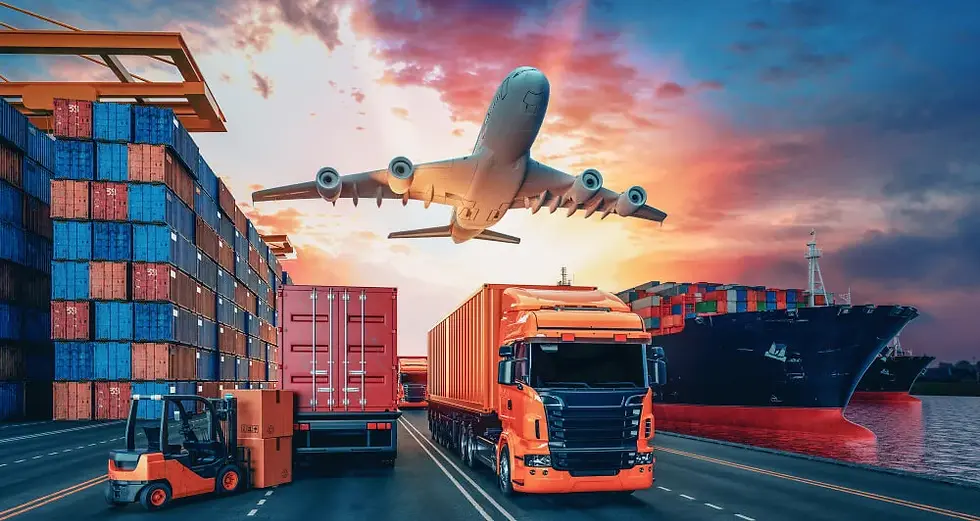Shipping from China to British Virgin Islands: A Comprehensive Guide
- CNXtrans

- Mar 31, 2023
- 4 min read
When it comes to shipping from China to the British Virgin Islands, businesses have two main options: air and sea freight. While air freight is faster, it can be significantly more expensive than sea freight. In this guide, we will focus on sea freight and provide a comprehensive overview of the process, including shipping methods, costs, and regulations.
Sea Freight Shipping Methods
There are two main methods of sea freight shipping from China to the British Virgin Islands: Full Container Load (FCL) and Less than Container Load (LCL).
Full Container Load (FCL)
FCL involves shipping a full container load of goods from China to the British Virgin Islands. This is a good option for businesses that have a large volume of goods to ship, as it can be more cost-effective than LCL for larger shipments.
FCL also offers more flexibility when it comes to packing and loading the container. This can help to ensure that goods are transported safely and securely.
Less than Container Load (LCL)
LCL involves shipping goods that do not fill a full container. This is a good option for businesses that have smaller shipments, as it allows them to share container space with other shippers.
While LCL can be more expensive than FCL on a per-unit basis, it can be a more cost-effective option for smaller shipments. However, businesses should be aware that LCL shipments may take longer to arrive than FCL shipments, as they require additional consolidation and deconsolidation processes.
Sea Freight Shipping Costs
The cost of sea freight shipping from China to the British Virgin Islands can vary depending on a range of factors, including the volume of goods being shipped, the shipping method, and the carrier used.
Businesses can expect to pay a range of fees, including:
Freight charges: These charges cover the cost of transporting goods from China to the British Virgin Islands and are typically calculated based on the weight or volume of the shipment.
Handling charges: These charges cover the cost of loading and unloading the goods at the port of departure and arrival.
Customs clearance fees: These fees cover the cost of processing the shipment through customs.
Terminal charges: These charges cover the cost of using the port facilities and equipment.
To ensure that businesses get the best possible price for sea freight shipping, it is important to shop around and compare quotes from different carriers. It is also important to factor in any additional costs, such as insurance or customs duties.
Sea Freight Shipping Regulations
When shipping goods from China to the British Virgin Islands, businesses must comply with a range of regulations, including customs regulations and import/export regulations.
Customs Regulations
Goods shipped from China to the British Virgin Islands must comply with British Virgin Islands customs regulations. Businesses should be aware of any prohibited or restricted items, as well as any documentation requirements.
Goods that are prohibited or restricted from import to the British Virgin Islands include:
Narcotics and dangerous drugs
Firearms and ammunition
Explosives
Obscene publications
Certain types of plants and animals
Businesses should also ensure that they have all the necessary documentation for their shipment, including:
Bill of lading
Commercial invoice
Packing list
Certificate of origin
Import license (if required)
Import/Export Regulations
In addition to customs regulations, businesses must also comply with import/export regulations when shipping goods from China to the British Virgin Islands. This includes obtaining any necessary permits or licenses, as well as complying with any relevant trade agreements or sanctions.
Businesses should also be aware of any taxes or duties that may apply to their shipment. The British Virgin Islands imposes a range of taxes and duties on imported goods, including customs duties, stamp duties, and excise taxes.
Air Shipping from China to British Virgin Islands
Air shipping from China to British Virgin Islands is another option for businesses looking to transport goods quickly. The Cyril E. King Airport in St. Thomas, USVI is the main point of entry for air cargo into the British Virgin Islands. Shipping by air can be more expensive than sea freight, but it is much faster and can be a good option for time-sensitive or high-value goods. Air cargo can typically be delivered in a matter of days, compared to several weeks for sea freight. However, air shipping may have restrictions on the size and weight of cargo that can be transported, and there may be additional fees for customs clearance and handling.
Conclusion
Shipping from China to British Virgin Islands can be a complex and challenging process, but with the right knowledge and preparation, it can be a smooth and efficient process. By understanding the different options available for shipping and the requirements for each, businesses can make informed decisions and ensure that their products arrive at their destination on time and in good condition.
Whether using air or sea shipping, it is important to choose a reliable logistics partner who has experience with shipping to British Virgin Islands and can provide the necessary support throughout the process. By following the regulations and requirements for shipping, businesses can avoid delays and ensure compliance with local laws.
Overall, the key to successful shipping from China to British Virgin Islands is careful planning, clear communication, and attention to detail. By following these best practices and working with experienced logistics partners, businesses can overcome the challenges of shipping and reach new markets in British Virgin Islands and beyond.
Need a China-based Shipping Agent to help you consolidate and ship internationally from China?





Comments